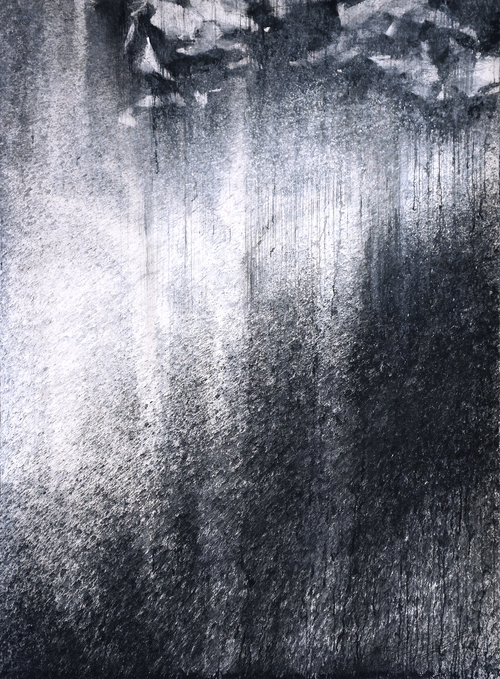
Some painters grind their own pigments, but Ekaterina Smirnova is the first artist I know of who makes her own water. Smirnova was inspired by the landing of the robotic probe Philae on comet 67P Churyumov–Gerasimenko in 2014. When she learned that scientists had discovered that the water on the comet is very different from the water on Earth, she decided to try to generate water that is similar in composition to the water found on 67P and use it in her paintings.
Smirnova found out that the water on 67P was heavy water, containing D20, or deuterium oxide. Since it’s not the kind of thing you can pick up at the grocery store, Smirnova set about McGyvering a system to make some in her studio, using electrolysis. (blog) That didn’t produce quite the results she wanted, so she bought some from a nuclear energy source and mixed until she was satisfied.
The artist says that through her work she studies the relationship between humans and the universe. She is particularly interested in the vapor that is released when the comet passes close to the Sun, forming the comet’s tail.

The focus on vapor and spray carries through to her painting technique: “I use splashing techniques, vaporizing watercolor paint before it hits the paper, this allows me to create an effect of mist, little droplets of water streaming with a strong force to the dark vacuum of space. Painting most of the work without touching paper with a brush, I use 30 to 40 layers, which helps to create complex textures on the painting.”
Next month, Smirnova will show her 67P-inspired work, including a musical collaboration to an audience of scientists at the 50th ESALAB Symposium which will be held in Leiden, in the Netherlands. If you can’t make it there, she’ll be showing in New York later this year.

5 thoughts on “Art of Science: Chasing a Comet From Lab to Studio”